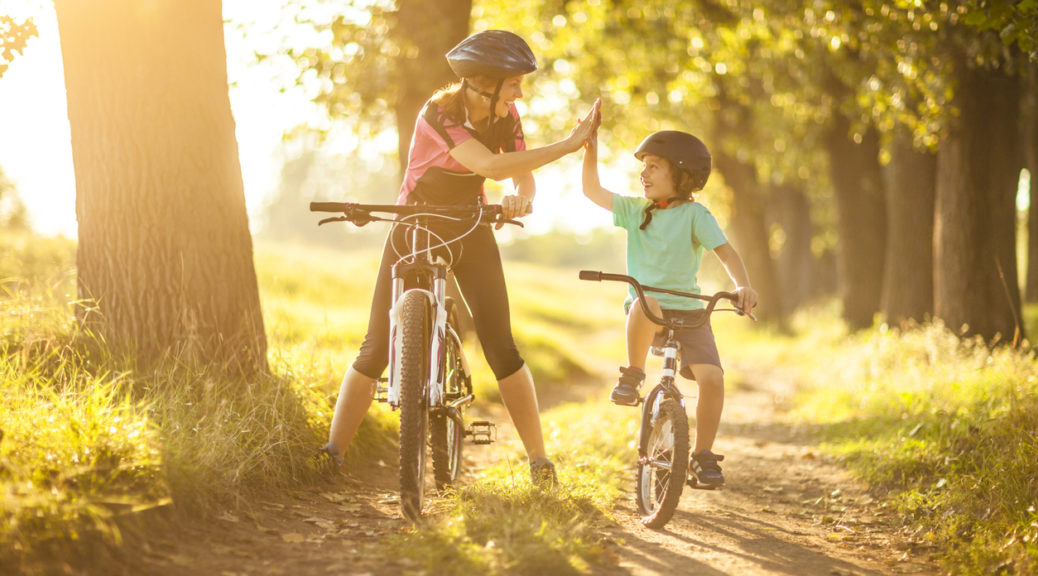How to Create A Mental Health Coping Toolkit for Coronavirus Anxiety: Coping During COVID-19

Nearly 40 million people in the United States (18%) experience an anxiety disorder in the average year, which includes 8% of children and teens. Imagine what that number looks like right now, during a year that has been far from average. We’re all experiencing some degree of anxiety as we’re coping with coronavirus and its evolving pandemic.
As part of our Coping During COVID-19 series, KVC’s Chief Clinical Officer, Chad E. Anderson shares how you can create a “Coping Toolkit” of practices to help you, and your children, manage your coronavirus anxiety.
How to Fill Your Coping Toolkit
For adults and teens, your toolkit can simply be a mental checklist or you can take the extra step to record it in a journal, a notes app on your phone, or a post-it that you place in a visible location. As you mentally assemble its components, keep in mind that your toolkit should include ways to address both the need for relaxation and the need for distraction.
For relaxation, Anderson recommends the Headspace app. This app is described as “meditation made simple” and offers guided meditations and mindfulness exercises. Find another relaxation app that appeals to you, or find guided meditations online.
Another great tool to help you relax is do-it-yourself music therapy. Pick music that makes you feel good. Create a go-to playlist of upbeat songs you love to sing along to, or find a channel that plays soothing music to help set your mind at ease.
Next, include something easy, accessible, and purely for enjoyment in moments when you need to divert attention away from anxious thought patterns. Give yourself time to enjoy a game on your phone or an old-school round of solitaire.
Another way to distract your mind is to focus on a future plan or project. Anderson goes to Trip Advisor to dream up new vacation destinations and itineraries. You may want to browse on Pinterest for new recipes or home decor projects. Select something that aligns with your personal hobbies and interests.
Next up, add a few physical activities that you enjoy. There are many psychological benefits to exercise. Movement can help to improve your mood and relax you. Research also shows that engaging in outdoor activities can help reduce stress and anxiety, so take these activities outside whenever you can.
Building a Coping Toolkit for Kids
Younger children can benefit from having a physical box, bag or special spot to place items that will fill their coping toolkit. Begin assembling it with a conversation. Grab a few notecards and have your children answer the phrase “When I feel ___________, I will ___________.” Document their answers and drop the notecards into their “kit.” Include the feelings listed below, and brainstorm healthy, relaxing responses to them. For example: “When I feel stressed, I will go outside and ride my bike.”
- Stressed
- Scared
- Worried
- Overwhelmed
Toolkits for kids should also include favorite items for distraction. Add a fidget spinner, small toys or a beloved stuffed animal that they can play with. A fun card game or a coloring book with colored pencils can also be an outlet to help quiet an anxious mind.
Have regular conversations with your kids about fear and other big feelings they might experience while coping with the coronavirus outbreak. Their routines and schedules have been upended. Social distancing requires separation from teachers, friends and extended family. It’s natural for them to feel sad and unsure. Acknowledge their feelings. Give them tools to weather this current health crisis, and build resilience that will last them a lifetime.
Add a Mindfulness Practice
Everyone’s coping toolkit should also include a mindfulness practice. There are many simple ways to incorporate mindfulness, and these exercises can be practiced anywhere and anytime, regardless of age. Several suggestions from the Mayo Clinic include:
- Pay attention. Take the time to experience what you are doing with all five of your senses — touch, sound, sight, smell and taste. When you take a bite of food, take time to smell, taste and truly enjoy it.
- Live in the moment. Try to intentionally bring an open, accepting and discerning attention to everything you do. Find joy in simple pleasures.
- Accept yourself. Practice treating yourself the way you treat a good friend. As COVID-19 continues to alter our lives, give yourself grace and patience.
- Focus on your breathing. When you have negative thoughts, try to sit down, take a deep breath and close your eyes. Focus on your breath as it moves in and out of your body. Sitting and breathing for even just one minute can help.
Find an overview of the Coping During COVID-19 series and a preview of what we will be sharing in weeks to come here. You can also follow us on Facebook or Instagram for more updates and information. We’re here for you. For as long as we are apart, we are all in this together.





